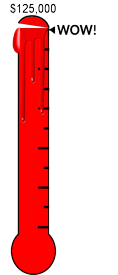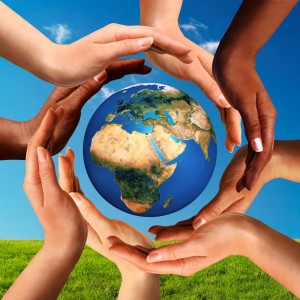

Thanks to your support in 2020!
 Company Mission: Increase Ontario’s textile waste diversion rate while maximizing the fundraising potential for registered charities throughout the process.
Company Mission: Increase Ontario’s textile waste diversion rate while maximizing the fundraising potential for registered charities throughout the process.
When TWD decided to restructure based on new green economy principles, we realized quickly that keeping our corporate structure in a standard pyramid format was only evolving half way. We checked our egos at the door and decided to look at our operation holistically; without the confines of traditional hierarchies.
The term ‘corporate personhood’ turned out to be a perfect analogy describing how TWD naturally functioned, once we tossed the chain of command flow chart in the recycle bin. We realized that what we had was a group of sections, much like organs in a body, that work independently of each other, yet are fully dependant on one another.
Instead of having just a president at the top, we now have a group of equity shareholders. Each is mandated to keep their ‘section’ functioning at prime capacity while maintaining consideration for the company as a whole. Although these shareholders are responsible for their own department’s function, they all work in tandem. At TWD there is no ‘battling between departments’ as we are all operating as a congruent whole.
The “brains”are what would normally be considered our CEO/President. We call him “Dad”. Not a micro manager, he watches the whole operation from a step back, keeping a keen eye on the balance of operations. He maintains relationships with our corporate partners, studies the industry and he networks. He also manages the financial components of our operation.
Our skeletal structure, we refer to as the “Infrastructure Department”, has their own location, and makes sure all inventory related issues are managed properly. They source or make everything we need to collect used clothing, from trucks to donation bins and signs. They also manage security protocols to keep our infrastructure safe.
Those shareholders make sure the other parts of us are running optimally.
Our lungs are our route workers/maintenance people/independent contractors. Without them, all our efforts would be in vain. They are out in all kinds of weather, collecting donations and cleaning up garbage. They deal with traffic, logistics, physical demands and sometimes long days making sure the routes of the clients we serve remain meticulous. It is their dedication that ensures our success.
The heart of our organization is in corporate. A group of dedicated staff and consultants work closely to keep TWD resonating at optimal levels. They keep us abreast of changes in the industry, innovative ways to push the industry forward, and optimizing our performance. Corporate also houses product development which is researching green tech that will revolutionize how Ontario manages its textile waste stream. Corporate maintains relationships with our clients, bylaw departments, media and help raise public awareness of what we do.
We could not be this successful if each unit wasn’t functioning at its best, alone and in unison. We each have a clearly defined roll to play and take responsibility for how our output affects the whole, either good or bad.
Some might say we resemble a sort of Holacracy. We can see the resemblance.